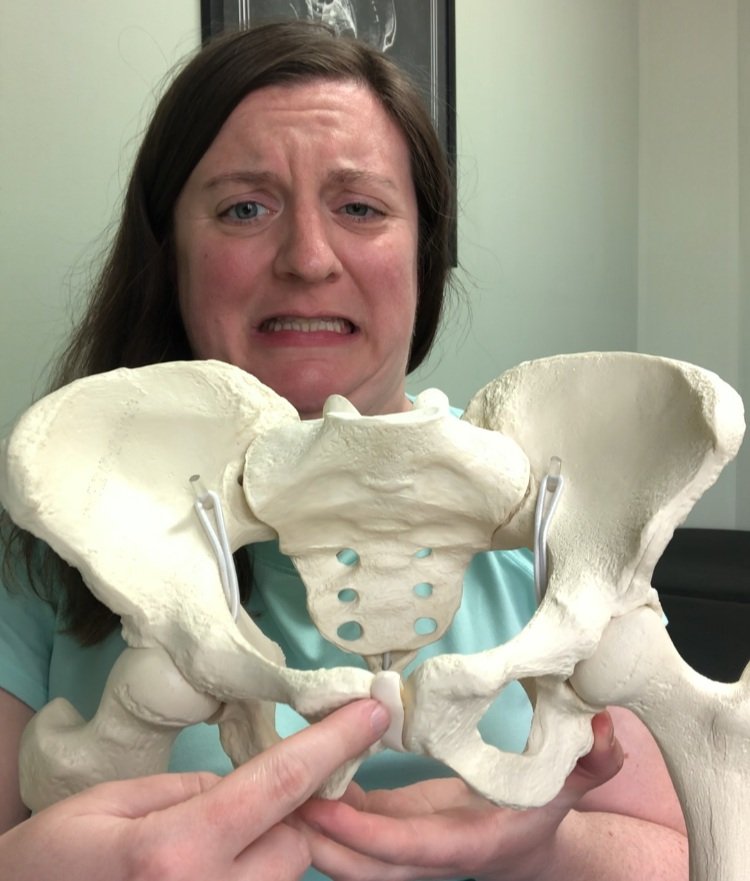Symphysis Pubis: Small Joint, Big Pains
The symphysis pubis is a relatively small-ish joint, but when it’s crabby, it will definitely let you know!
First, what exactly is the symphysis pubis (SP)? The symphysis pubis is a joint that is front and center in the pelvis. If you place a finger or 2 on your belly button and follow straight down towards your pelvis, once you feel resistance again, you are feeling the symphysis pubis. This joint is designed to allow some movement and rotation to accommodate the 2 halves of the pelvis moving separately with activity. Most often, people are completely unaware this joint even exists unless it becomes problematic and painful.
Location of the symphysis pubis. Nestled between the 2 halves of the pelvis, front and centered
As discussed in previous blog posts, the pelvis has mobility throughout movement and is at the mercy of how the muscles attached to the pelvis are pulling on the bones. Posture changes can also impact how this joint is functioning. Typically when people experience symphysis pubic dysfunction (SPD) is during pregnancy.
Throughout pregnancy, the body obviously goes through drastic changes physically and hormonally. Part of the change that typically occurs during pregnancy is increased low back arching due to the weight of the baby pulling forward. When the low back increases in arch, this is going to put increased tension on the back side of the pelvis, tipping the pelvis more forward. The forward tilt of the pelvis also makes more room for the baby to engage eventually for delivery.
With the forward tip of the pelvis, this can cause significant increase in pressure on the symphysis pubis joint. With postural changes and altered muscle strength/pull on the pelvis this can create the perfect storm to have SPD pain.
Demonstrating the pressure on the symphysis pubis when holding the model in a similar position frequently seen during pregnancy
Symptoms of SPD pain may include: intense pain/pressure that is low and midline (but above the pelvic floor), increase pain with single leg activities (such as standing and lifting 1 foot to thread through a pant leg while getting dressed), ambulating up/down stairs, and rolling over in bed at night.
The good news... you don’t have to live with this pain! If you are experiencing SPD, please seek out a skilled pelvic floor therapist! They can help educate you on positioning ideas, hip shifting, muscle strengthening and posture tips that can help alleviate the pain. This is NOT just a “side effect” of pregnancy.
Come back next week to see some ideas to help improve SPD discomfort.
If you found this post helpful, please comment and share with others as I love educating the community!
Keep following along for tips, trick, and pelvic floor tidbits.


